How to get rid of liver spots and skin pigmentation
The causes, prevention and treatment of liver spots...
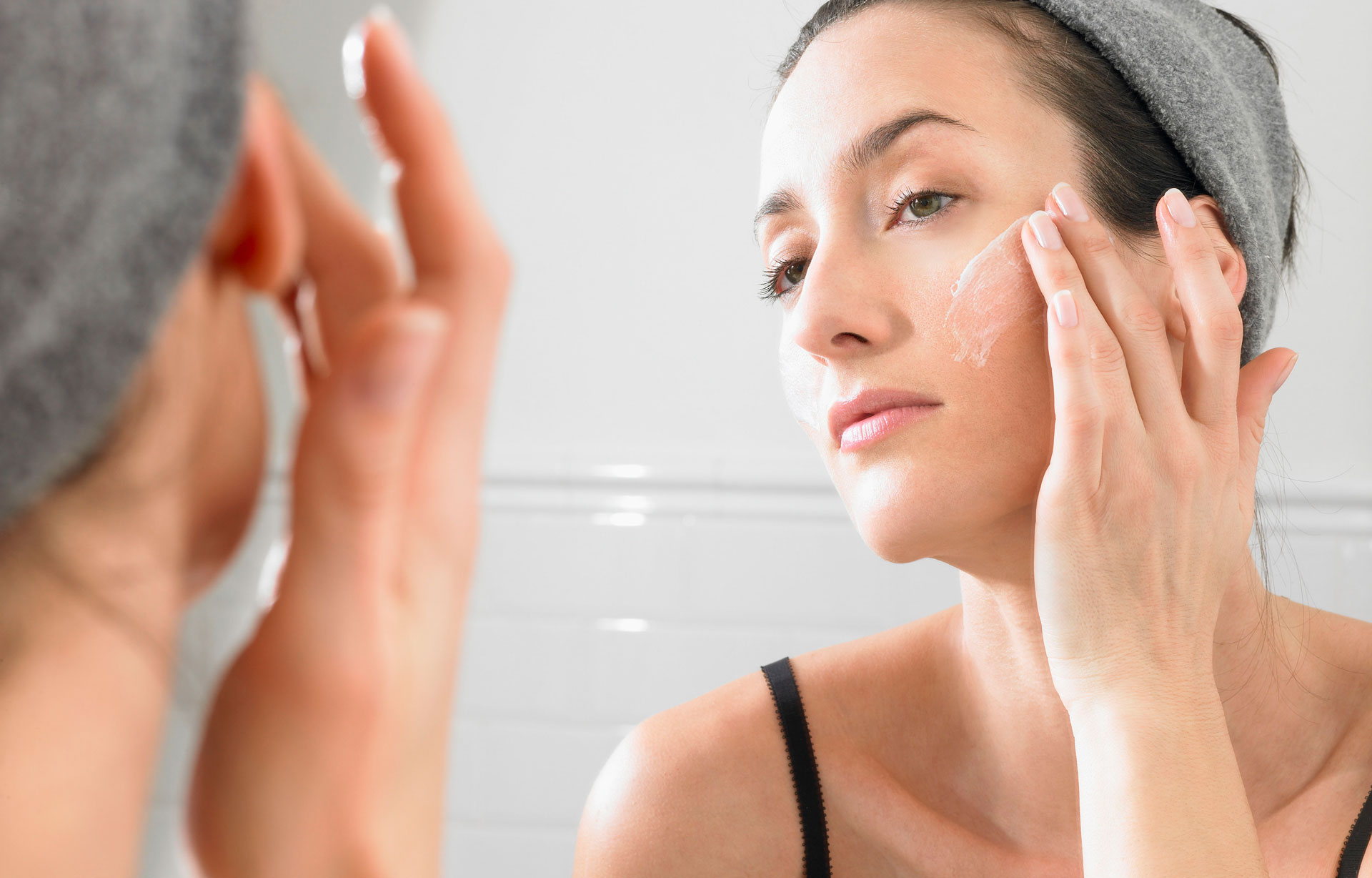

Liver spots can be frustrating but if want to know how to get rid of them, you've come to the right place. Here are the ingredients, treatments and lifestyle changes you need to brighten up your skin and get rid of dark spots, dull skin and patchy skin tone
Never mind wrinkles, one of the biggest concerns for women today is uneven skin tone and how to get rid of liver spots. In fact, searches for ‘hyperpigmentation’ - the broad, all-encompassing term for liver spots, melasma and mottled skin tone- rose by 140 percent during lockdown.
Unlike normal spots on the face, liver spots show up as dark brown blotches - and are also commonly referred to as dark, age and sunspots. These patches of uneven skin tone are the result of excess melanin production, which is the body’s natural tanning pigment, causing spots or patches that look darker than the rest of your skin to form.
“Hyperpigmentation, age spots, post-acne scarring and freckles are all signs of melanin coming to the surface of damaged skin,” explains Dr Murad, Board Certified Dermatologist and Founder of Murad Skincare. “Melanin is produced after the skin experiences trauma, such as UV exposure.
We’ve spoken to the experts for advice on the causes, treatments and at-home products to treat liver spots and other forms of hyperpigmentation.
Do I have liver spots?
Liver spots show up as darker oval patches on the skin. These spots are usually flat, and vary in colour from light to dark brown. Unlike freckles, which will usually fade during the winter months with less exposure to the sun, age spots do not fade.
Dr Hadi Abushaira, senior consultant dermatologist for the NHS, says liver spots can appear in many places: "They're most often found on the face, hands and forearms, and are larger and more defined than freckles," he says. These spots can vary in size, from a small freckle-sized speck to more noticeable blotches, about 1cm in diameter, and can cluster together, which makes them more apparent.
GoodtoKnow Newsletter
Parenting advice, hot topics, best buys and family finance tips delivered straight to your inbox.
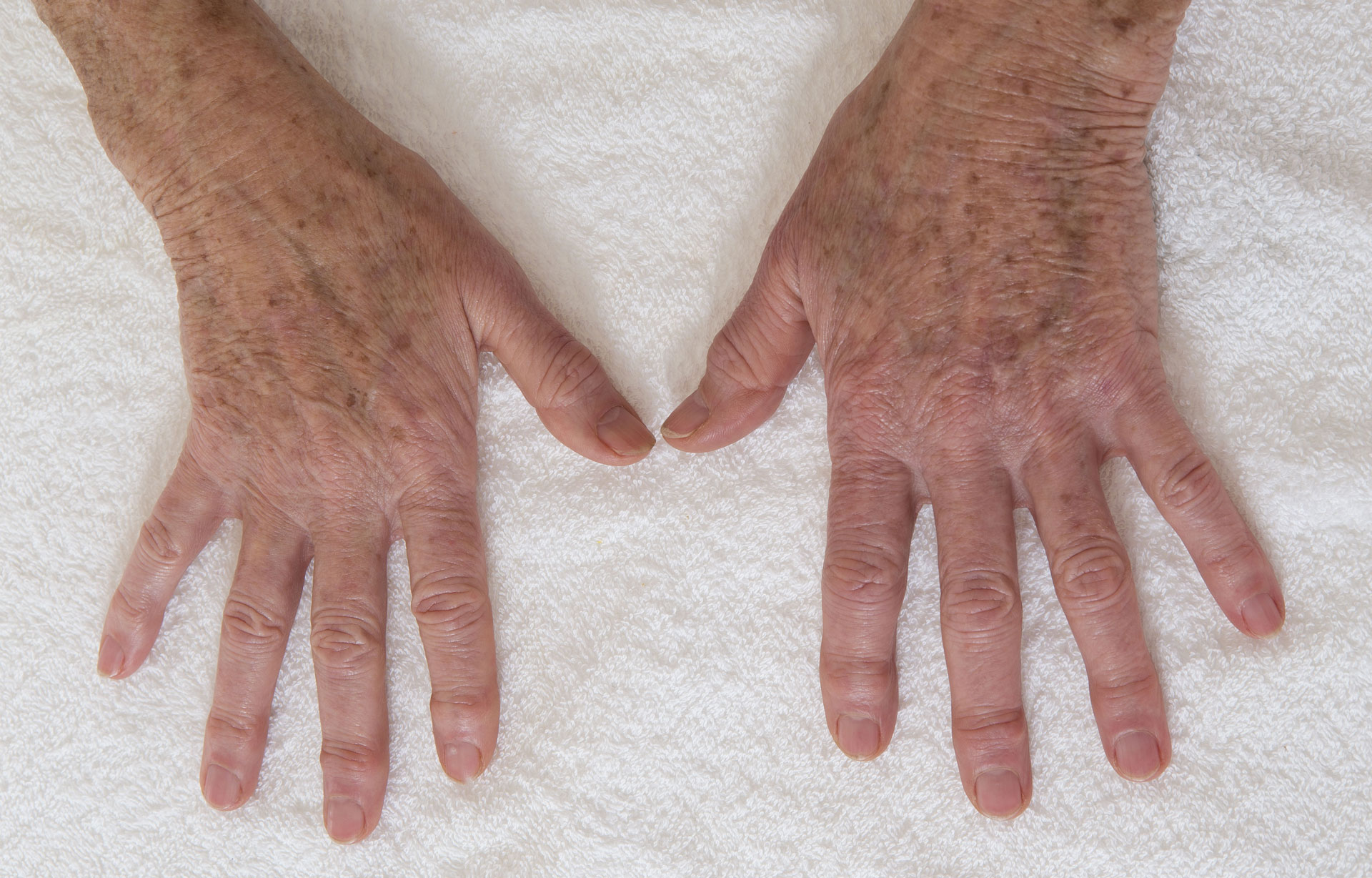
"Liver spots are very common in people over 50, and women are more likely to develop these spots than men," explains Faye Purcell, Product Development Chemist and skincare expert at Q+A. "They tend to be more visible on those with fair complexions. However, people who use tanning beds, or spend a lot of time in the sun without sufficient protection can develop liver spots at a much earlier age."
Dark spots shouldn't hurt or itch, so don't usually pose a health risk. For cosmetic reasons they can be treated, lightened and removed. However, if you notice a spot changing in appearance, then speak to your GP or dermatologist. Get your spot checked out if it's black, bleeding, has increased in size or has an irregular border as these could all be signs of melanoma, a form of skin cancer.
How to get rid of liver spots
If you have liver spots then don't worry, with the right treatments and products they can be lightened or removed. It's a misconception that dark spots 'melt away' - in fact, they need to be moved up and out of the skin, the same as you would with a patch of dry skin or a spot.
It also requires some patience. You need to make sure you give your new regime enough time to work. As Faye Purcell says, "Be consistent with your skincare – a lot of active ingredients need 4-8 weeks for their effects to show so don’t be disheartened if you don’t see results straight away."
1. Q+A Vitamin C Brightening Serum
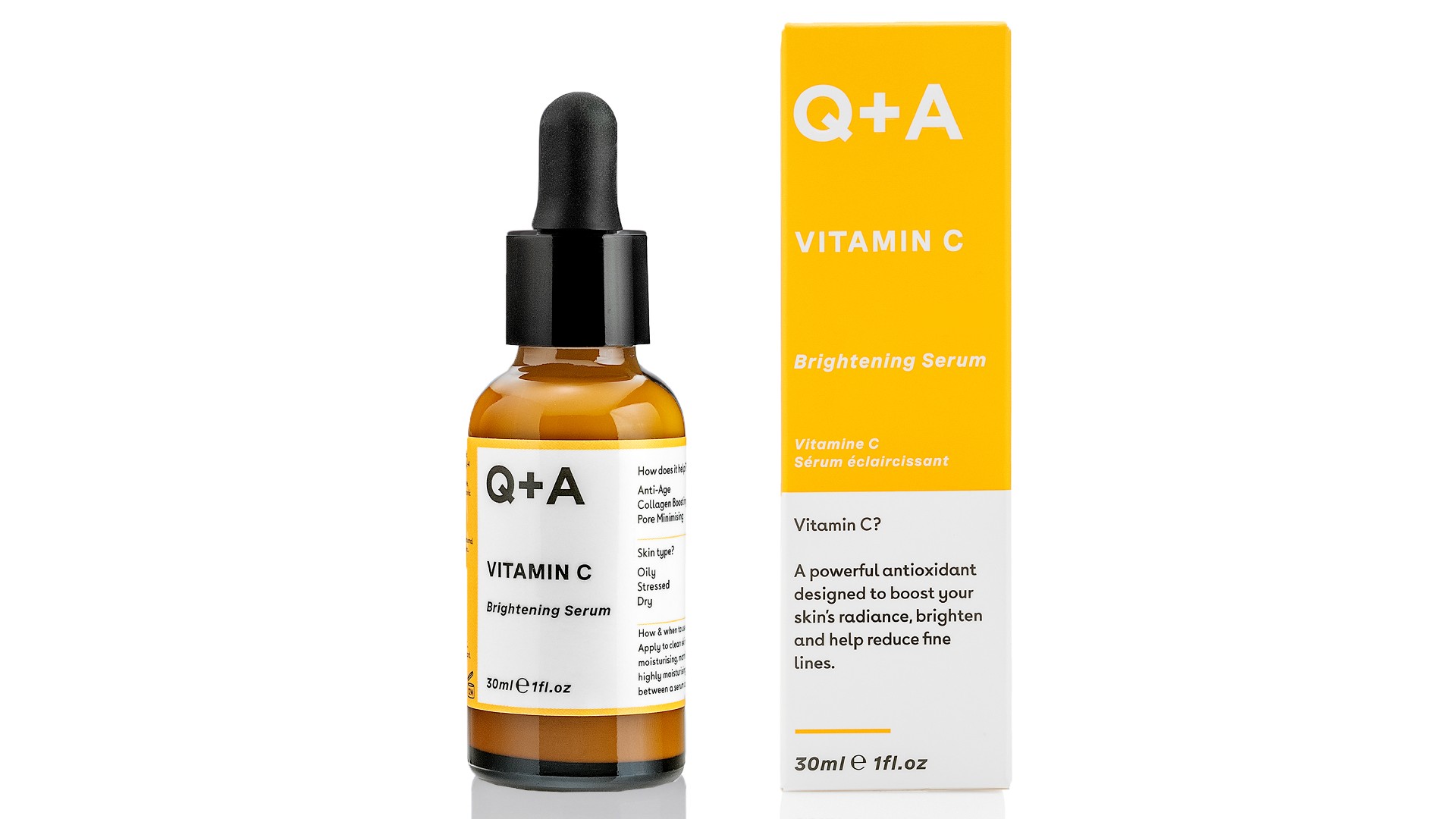
"Look out for ingredients that enhance cell turn over (chemical exfoliation) or antioxidant ingredients that can protect your skin against pollution, including UV damage," suggests Faye Purcell. "Vitamin C, Azelaic Acid, Alpha Arbutin, AHA’s and Retinoids are all great options if you are looking to reduce the appearance of liver spots." This new super serum contains vitamin C, a potent antioxidant and effective skin-brightener, designed to boost radiance and improve collagen production.
2. L'Oreal Paris Revitalift Laser Renew Ampoules
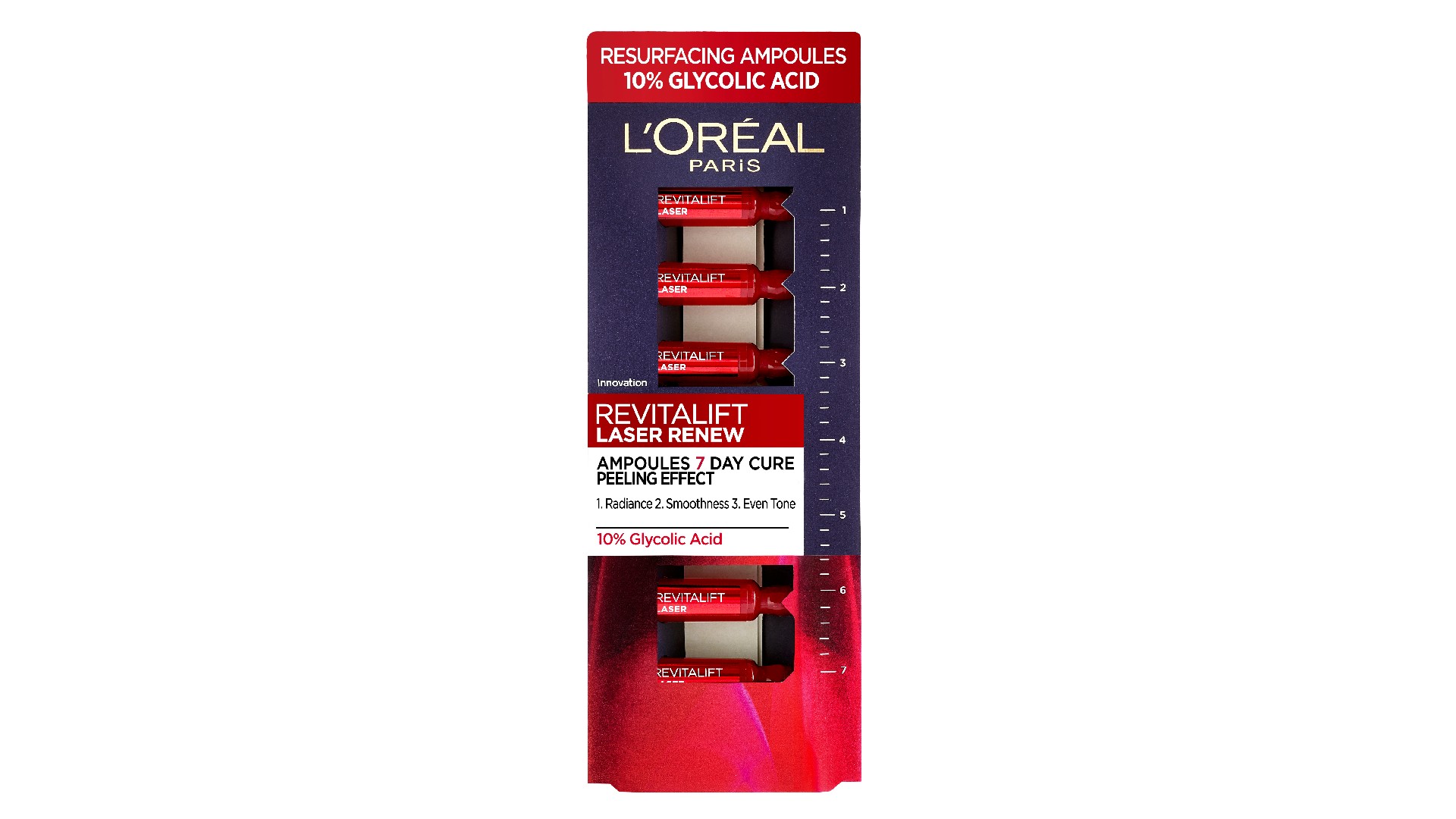
It’s when melanin migrates to the surface layers of your skin that it appears as dark spots so by shifting those top layers you can help to break up pigmentation. Glycolic acid is revered for its skin-sloughing powers so it’s ideal for mottled complexions. This is a 7-day intensive course of glycolic acid that peels away the upper layer of skin to reinstate a clearer complexion.
3. Murad Rapid Dark Spot Correcting Serum
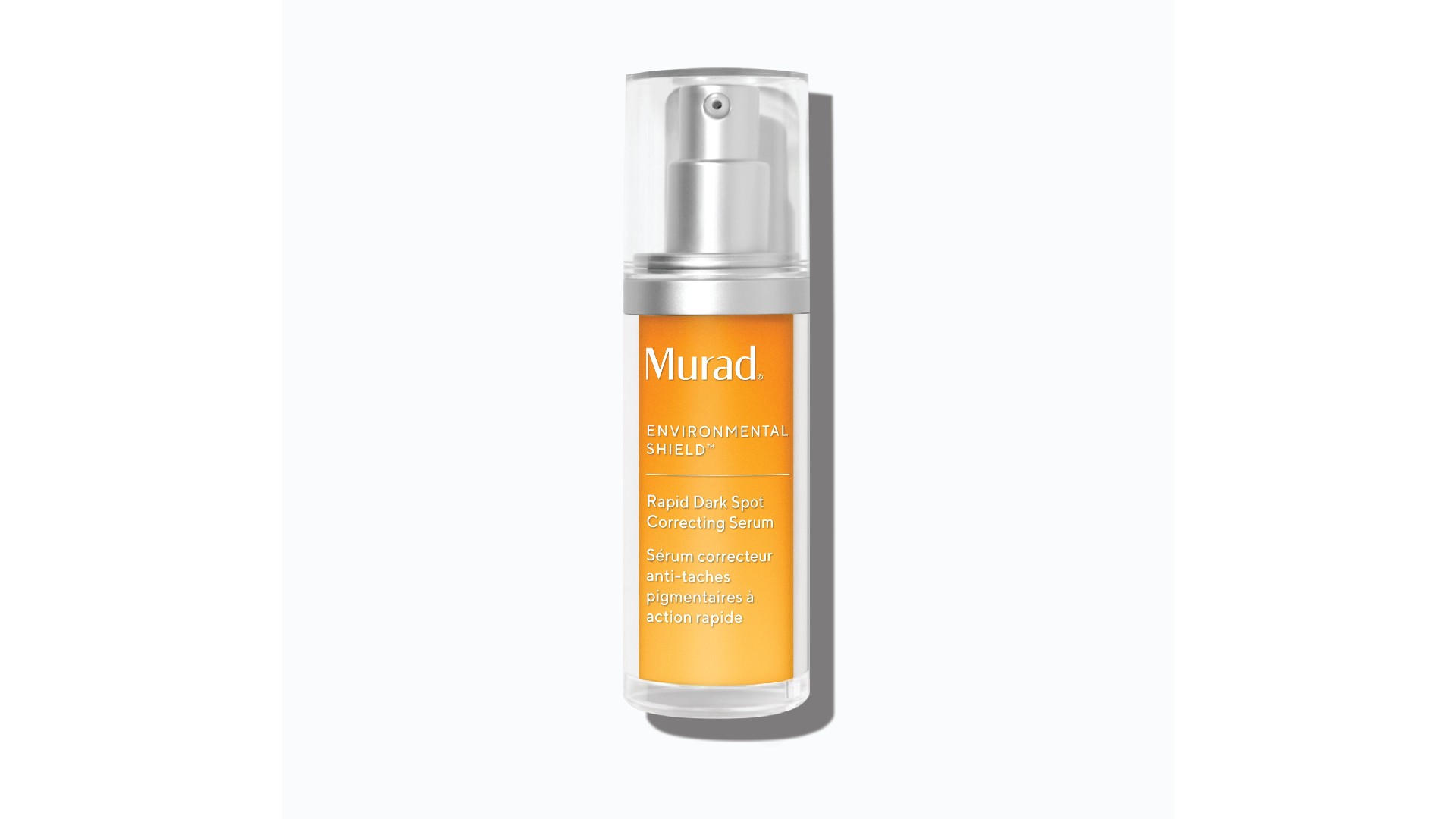
The success of this serum is down to a Tranexamic Acid and Glycolic Acid cocktail, which accelerates surface cell turnover so dull, mottled skin is eventually replaced by fresh, peachy cells. It's backed up by clinically proven results - in trials, 84% of testers showed a visible reduction in the look of dark spots in just 14 days.
4. The Ordinary Ascorbic Acid 8% + Alpha Arbutin 2%
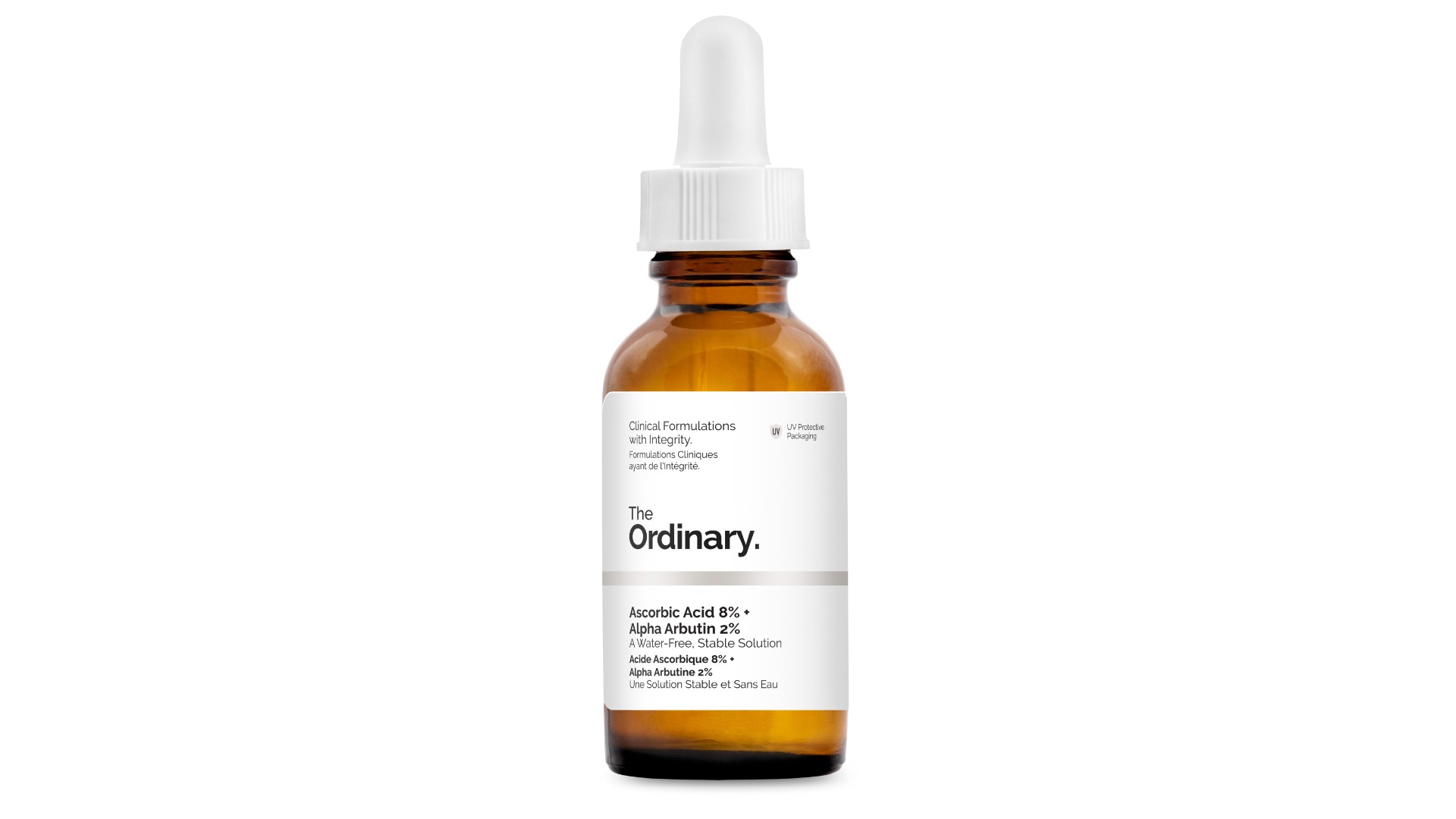
Vitamin C inhibits the production of pigment to prevent dark spots from forming. This solution combines vitamin C with alpha arbutin, another powerful brightening agent, to fade brown spots and improve skin clarity. Apply a few drops morning and evening before your regular moisturiser.
5. Soltan Sensitive Face Cream SPF50+
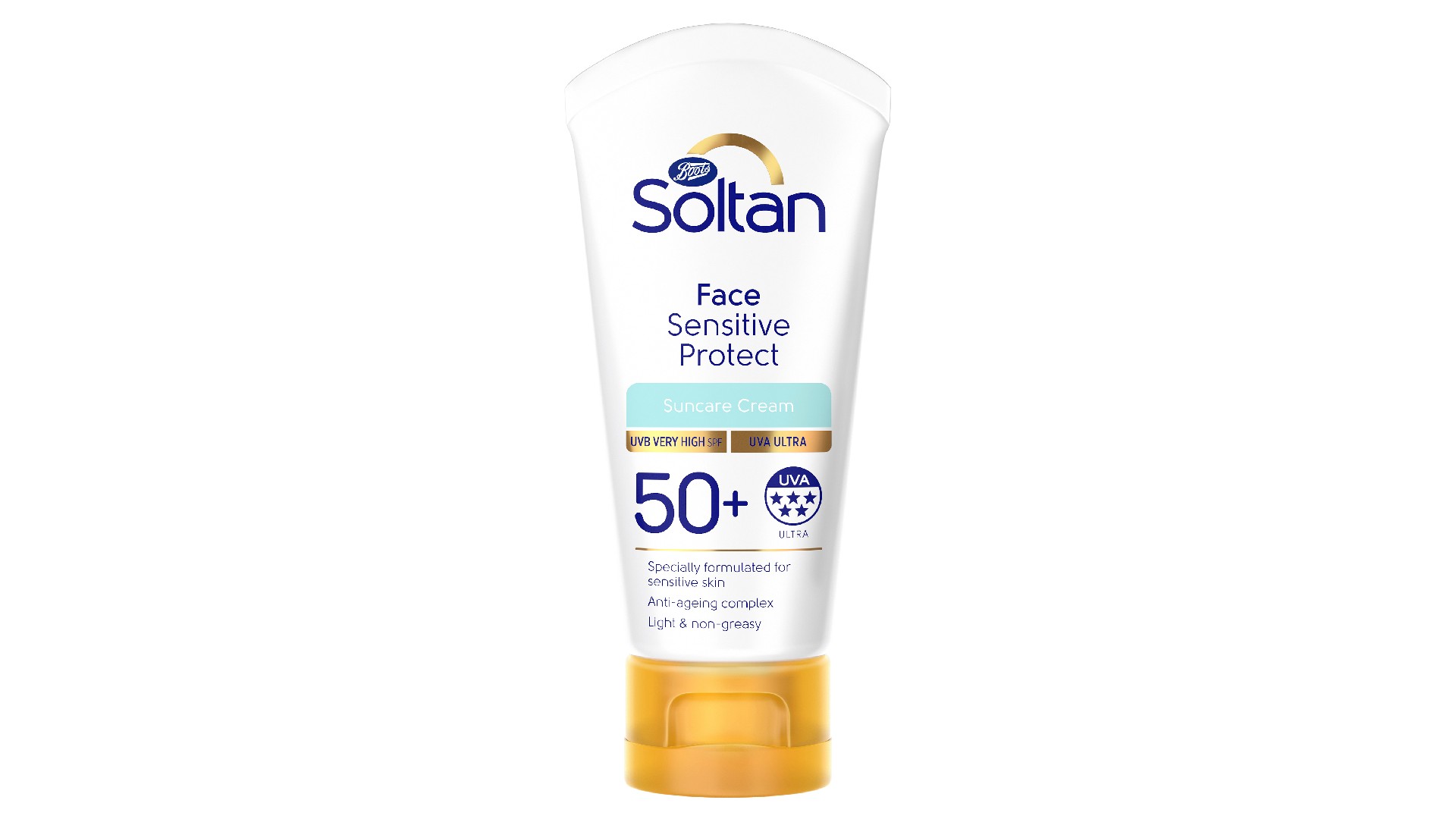
The best thing you can do to maintain a bright and even complexion is to wear sun cream every day. This is our pick with high factor UVB protection and a 5* UVA defence. Even better, it's enriched with antioxidants to fight the damage that causes pigmentation.
6. Laser and IPL treatments
Laser and intense pulsed light therapies (IPL) aim to target pigmentation such as liver spots, without damaging the surrounding tissue.
"My favourite treatment to banish hyperpigmentation has to be Lumecca by InMode," says Dr Dev Patel, leading Aesthetic Doctor with over 17 years of clinical experience. "This is considered by many, to be the most powerful and effective IPL system in the world, yet has surprisingly little or no downtime for most patients."
Nilam Holmes, celebrity skin & beauty specialist, and founder of HD Brows agrees. "I have found I can clear hyperpigmentation by at least 90 per cent within just two treatments using the Lumecca system."
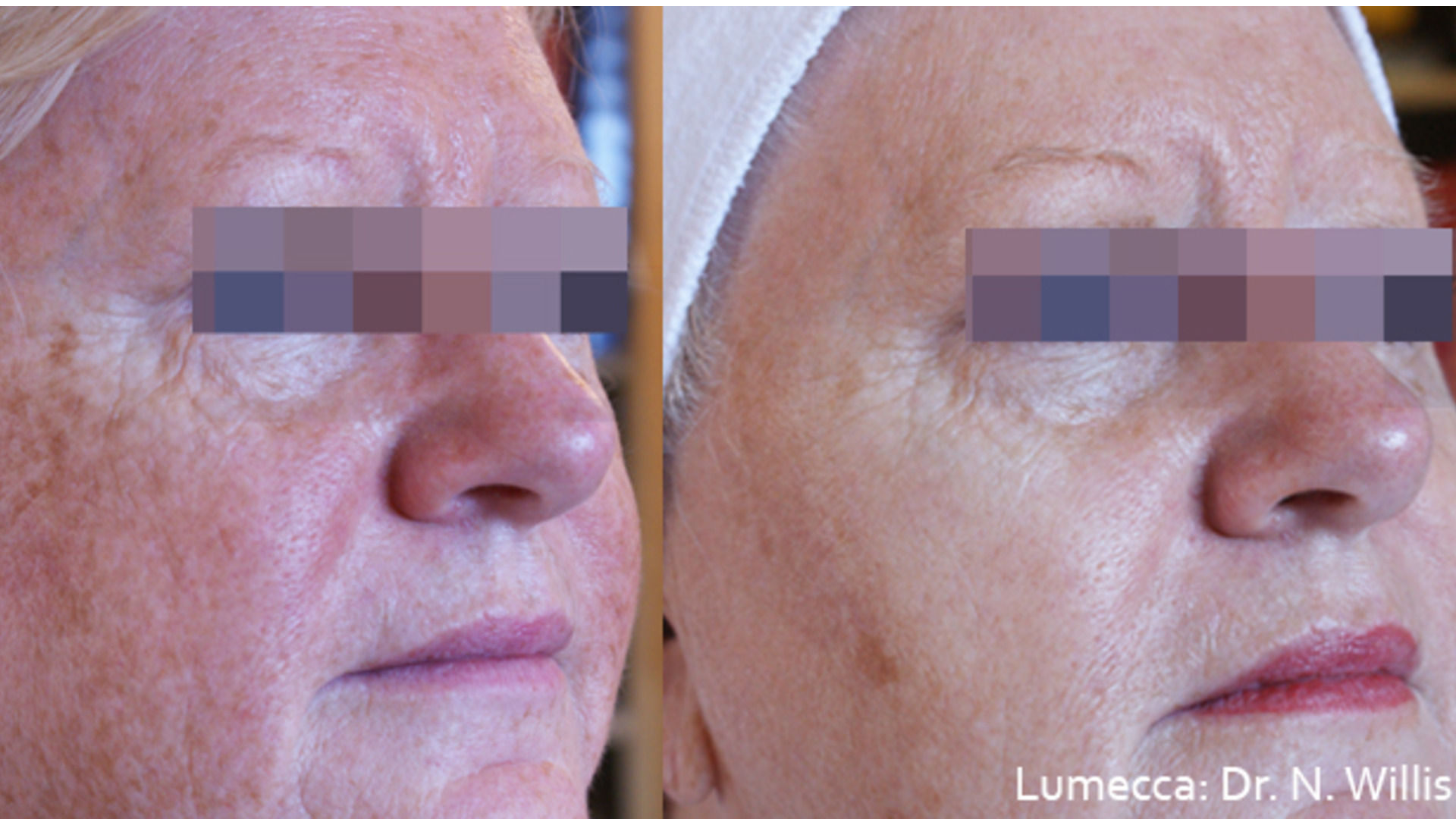
The laser delivers different wavelengths of light into the affected area. The unwanted pigments absorb the light and are effectively destroyed so skin looks clearer.
There's little recovery time needed, your face may feel a little sunburned for about 20 minutes. You'll start to see results after one or two weeks. As long as you look after your skin with a high daily SPF, the results are permanent.
Prices start at £250 per session. Find your nearest practitioner visit Inmode.
7. Microdermabrasion
Microdermabrasion is similar to dermabrasion, but works at a shallower depth - so, may require more sessions to achieve the desired result.
"Here, we exfoliate only the layers of the epidermis in a controlled manner, so it helps to fight only superficial discolouration," explains Agi. "We can choose from different types of microdermabrasion - diamond, corundum and water-oxygen, aka oxydermabrasion. It is an effective method of removing discolouration and unifying the skin tone, but it only has a very surface effect. So, it will not be used in removing discolouration that is located deeper in the dermis."
This is a much gentler approach to get rid of liver spots than dermabrasion, which physically sloughs down the top layer of skin. This may cause redness, scabbing and sensitivity. Once the surface layer is removed, new skin comes to the fore so your complexion looks clearer and more even.
Agi Demidziuk, Esthetician, at Dr Bejma Medical Clinic says it is quite an invasive procedure. "Dermabrasion is quite extreme but it can remove deep hyperpigmentation. The healing period of the skin can take weeks, skin can become red, swollen and bruised. It is not recommended for sensitive skin or darker skin types due to the risk of discolouration and scars."
Both of these options are best avoided for those with Rosacea and thread veins.
Prices for microdermabrasion start from around £65 for a single treatment on the face at Sk:n Clinics.
8. Cryotherapy
Sometimes referred to as cold therapy, this procedure involves applying a cold swab of liquid nitrogen to the skin. It stays in position for 5-10 seconds to destroy the area of pigmentation, until the skin cells scab over and fall off.
"If you have single or just a few dark spots, live liver spots, this treatment can work magic, but is not suitable for larger area of pigmentation," explains Dr Magdalena Bejma, founder of Dr Bejma Medical Clinic.
She adds, "This treatment also works well on those with a lighter skin complexion, as there is a risk of permanent discolouration in darker skin types."
But once the dark spot has gone, that's it - permanent clarity, and the treatment takes just a few seconds.
Prices for cryotherapy treatment start at £50 at the Dr Bejma Medical Clinic.
9. Chemical peel
An in-salon chemical peel is a good treatment for stubborn liver spots, and works by applying an acid solution to the face or other areas of the body. This strips the top layers of skin to shed mottled patches and soften pigmentation.
"This is one of my favourite methods for treating skin pigmentation," says Agi Demidziuk, Aesthetician at Dr Bejma Medical Clinic, "because during this treatment, we are able to remove the existing hyperpigmentation, but also to protect the skin against the formation of new ones, influencing the activity of melanocytes."
Do your research and find the right dermatologist or aesthetician for you. You can search for a trusted doctor or dermatologist on The General Medical Council.
After the peel, you are likely to experience some redness and sensitivity, and it will make your skin more sensitive to the sun, which is why it is often a good idea to delay this treatment until the winter months when sun exposure is a little less intense.
Prices start from around £60 for a mild peel but can range up to £500 for a deeper peel.
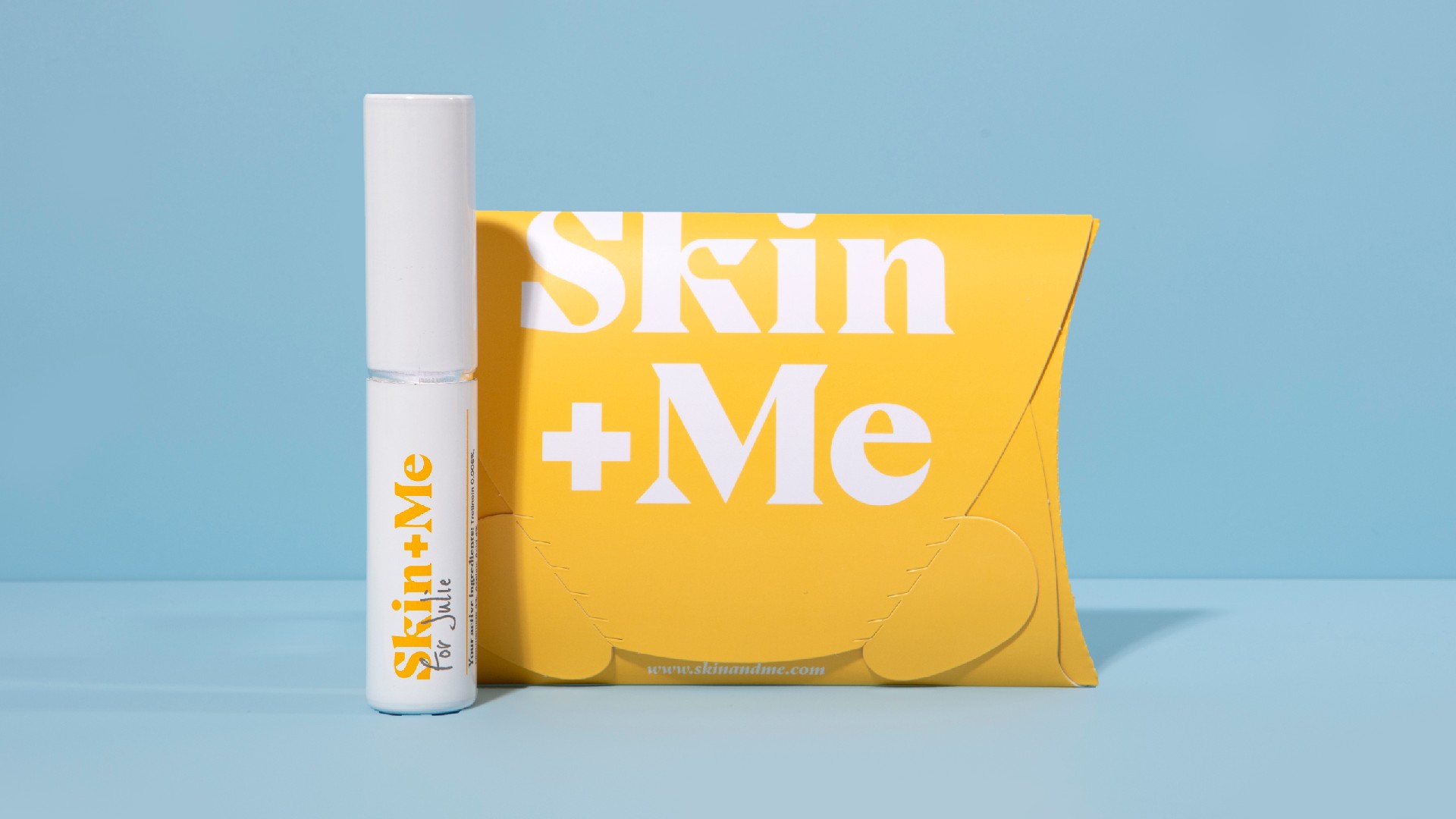
10. Virtual dermatologist
If you're not able to make it to a clinic, there are virtual services that may help. We recommend Skin + Me, a subscription skincare brand that offers personalised treatment plans devised by a team of industry heavyweight dermatologists and pharmacists, who create the exact right combination of prescription-strength ingredients to treat everything from acne and wrinkles to, of course, hyperpigmentation.
You’ll be asked for three no make-up, unfiltered selfies and take a five-minute questionnaire about your current routine, medical history and skin goals. For £19.99 a month, you’ll be sent medical-grade active ingredients in an innovative daily doser.
The intelligent packaging means you are given the exact measured amount you need, as recommended by your dermatologist. The concentrations start low at first, then build up in small increments every month as your skin acclimatises.
What are the causes of liver spots
Sun exposure: “Sun damage is a major - although not sole - cause of pigmentation,” says Dr Murad, Board Certified Dermatologist and Founder of Murad Skincare. Ultraviolet (UV) light speeds up the production of melanin, a natural pigment that gives skin its colour. On skin that has had years of sun exposure, age spots appear when melanin becomes clumped or is produced in high concentrations. Use of commercial tanning lamps and beds also can cause liver spots.
Age: Many people note that one of the main cause of liver spots is 'old age', which is technically true, but really it means many years exposed to UV light from the sun. “As we age, the number of melanocytes in our skin decreases,” says Dr Murad. “The remaining melanocytes attempt to compensate for the missing ones, so we have an overproduction of pigment in one area and a decline or complete absence in another. This is why dark spots form.”
Hormones: Changes in hormone balance during pregnancy and the menopause can make you more susceptible to hyperpigmentation. It is believed to happen when oestrogen and progesterone (the two main female sex hormones) kick melanin into overproduction when skin is exposed to UV rays. It can also be affected by taking certain contraceptive pills and hormone treatments.
Genetics: Genetics can also play a part in the formation of liver spots and areas of pigmentation, given that the number of melanocytes we all have are dictated by our genetic make-up, so even if you've been careful in the sun, you may find them difficult to avoid.
Smoking: Yet another reason to give up the cigarettes, smoking also has the potential to stimulate the skin's melanocytes, the skin's pigment-making cells, to go into overdrives, causing hyperpigmentation.

How to prevent liver spots
There are some very effective ways to get rid of liver spots, but prevention is always better than cure. Let's start with the biggest contributing factor - UV exposure. Avoid the sun when it's at its most intense - between 10am and 4pm, and wear a high factor, broad spectrum sunscreen. "It is important to use a sun screen every day, even when its cloudy or dull outside because UVA rays, (the ones responsible for premature ageing, skin cancer and pigmentation), are active all year round and at the same strength no matter what the weather," explains Dr Murad.
If you're going to be in the sun then apply a good layer at least 20 minutes before heading outside and reapply sun cream every two hours. Wear a wide-brimmed hat and sunglasses to help protect your skin from further UV damage when you're out and about.
Don't forget your hands. "Many people develop liver spots on their hands because it’s an area of our body we forget to apply SPF to, even though it is in fact one of the most sun-exposed areas," says Faye Purcell. Cover them in sunscreen every morning and wear gloves as soon as it gets cold enough - the sun's rays still penetrate on cloudy, wintry days so an extra protective layer will help shield them against UV damage.
Not all types of hyperpigmentation are preventable, particularly hormonal-related melasma. You can limit the effect of post-inflammatory pigmentation by treating acne with salicylic acid creams to purge pores and prevent breakouts. Whatever you do, avoid picking, squeezing or scratching spots or bites on the skin, as this can result in inflammation, which triggers pigmentation.
The other types of skin pigmentation
Hyperpigmentation is the all-encompassing term for skin discolouration but did you know there are different types?
Liver spots: Also known as age or sun spots, these small, dark brown patches are found close to the surface of the skin. They’re caused by external factors, the most common of which is repeated UV exposure, and affect both men and women.
Melasma: Brought on by internal hormonal changes, it’s common in pregnancy and while using contraceptive medicine, and only affects women. Appearing as tan-coloured blotches on the forehead, chin, upper lip and sometimes the stomach, melasma can be harder to treat as you need to address the root cause.
Post-inflammatory pigmentation: Spots and cuts lead to inflammation, which means our skin cells produce extra pigment during the healing process, leaving behind red or brown dots. It’s more noticeable in darker skin tones.
Video of the Week

Stephanie is a Beauty Editor across five national women’s magazine titles, with more than fifteen years’ experience working within the beauty industry. She has been shortlisted for multiple awards at the J&J Beauty Journalism Awards, and was the runner-up at the Wella Hair Journalism Awards in 2009. She has written for many brands, including Grazia, Now, More!, Fabulous, Woman & Home, NW, Woman, Woman's Own, Woman's Weekly, Essentials, Best, Chat, Pick Me Up and OK! Online. In 2010 she launched her own beauty blog, which was also shortlisted for Best Beauty Blog in the 2011 and 2012 J&J Beauty Journalism Awards.